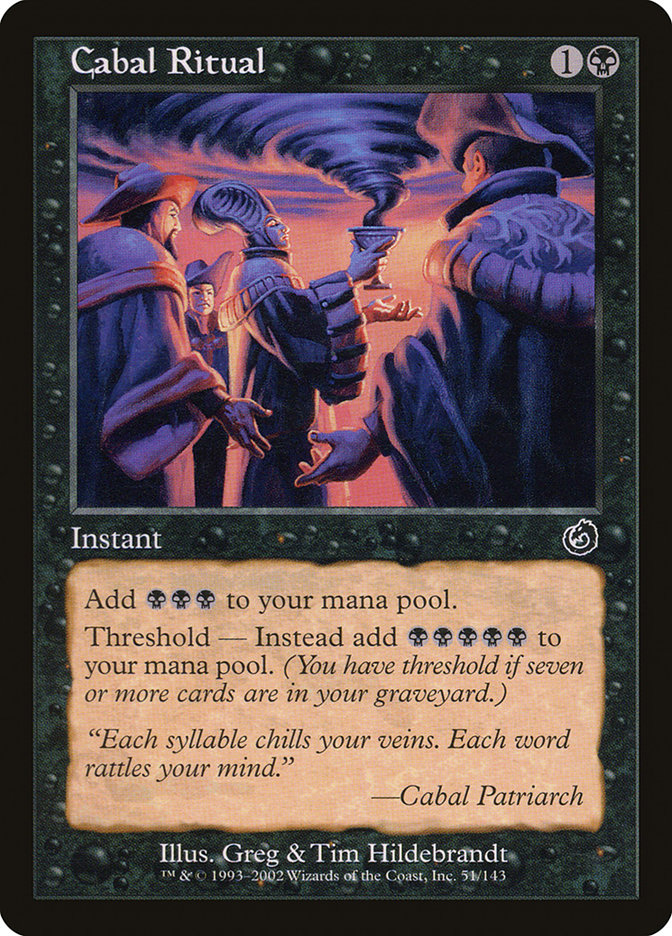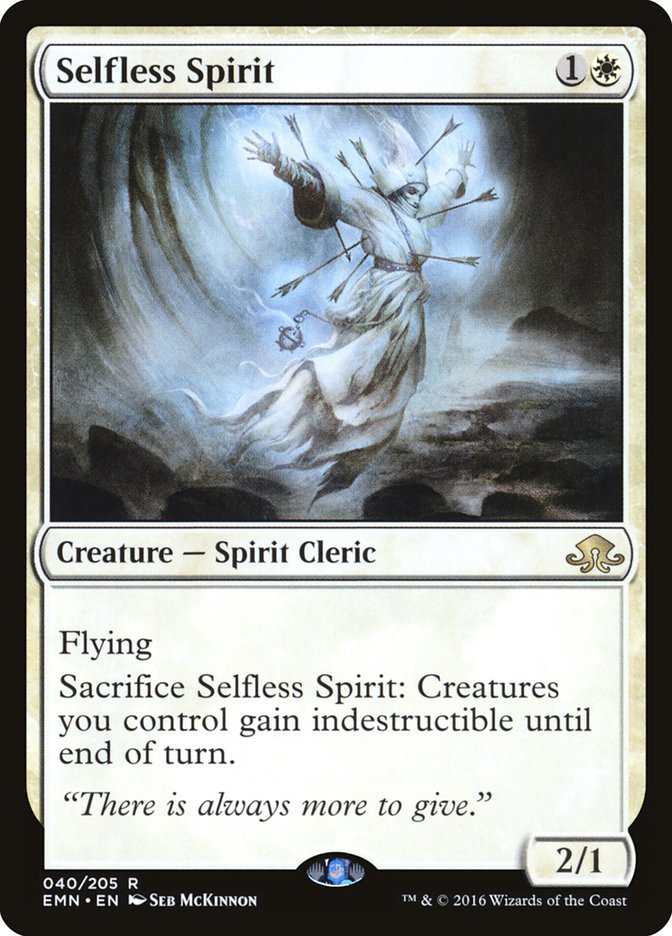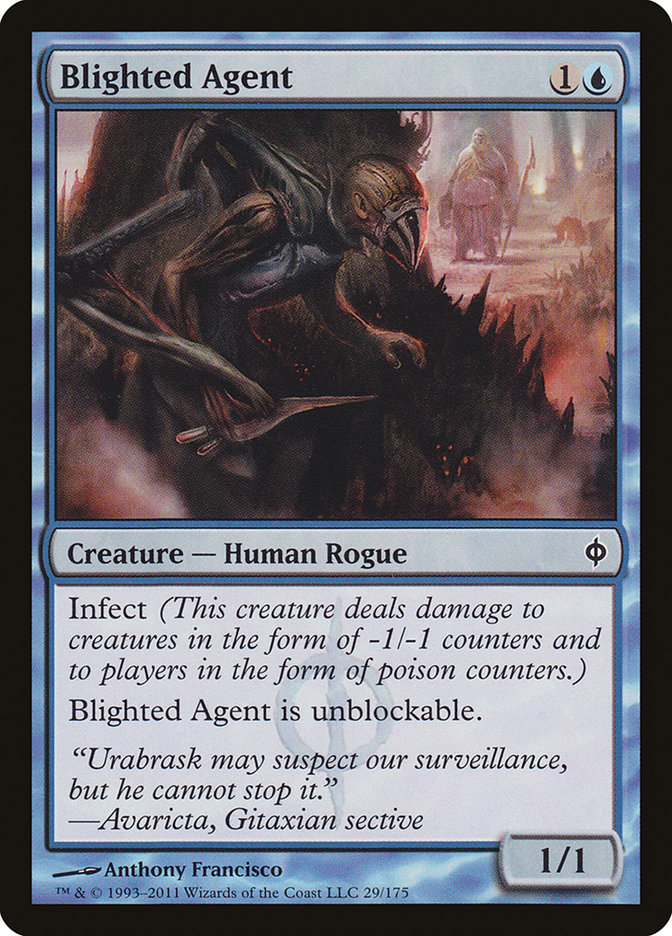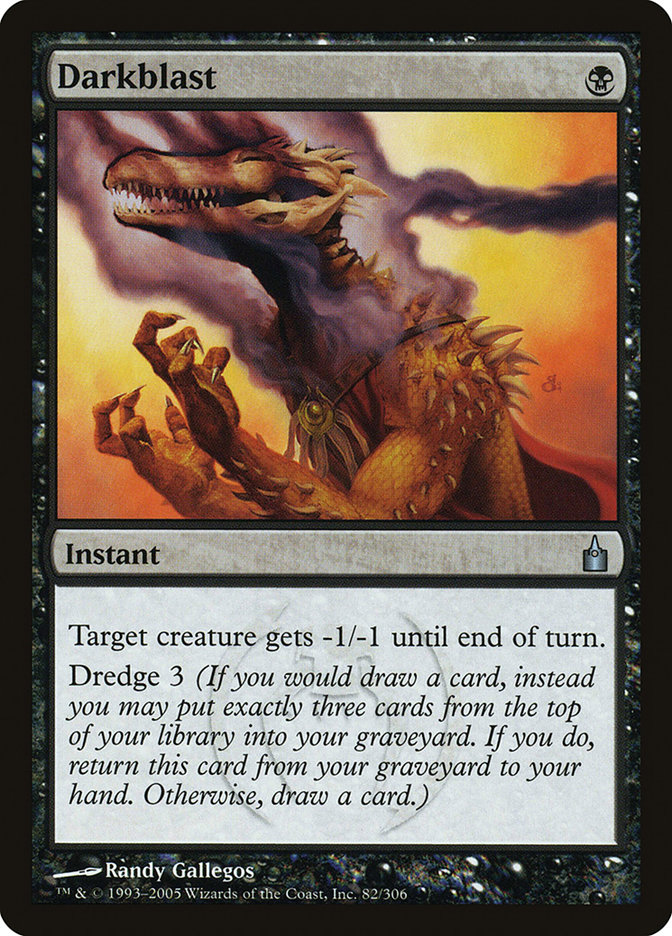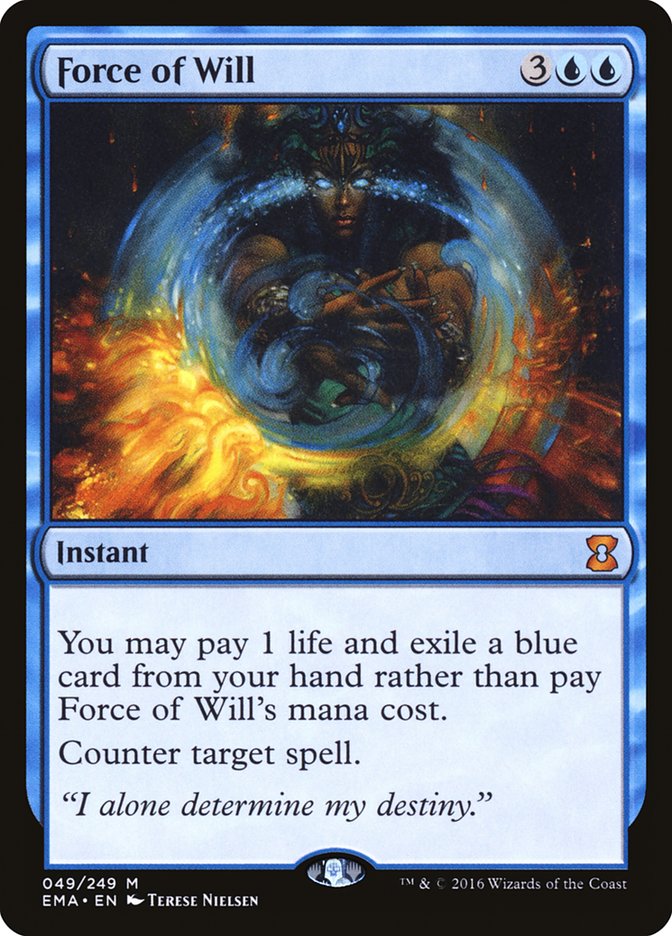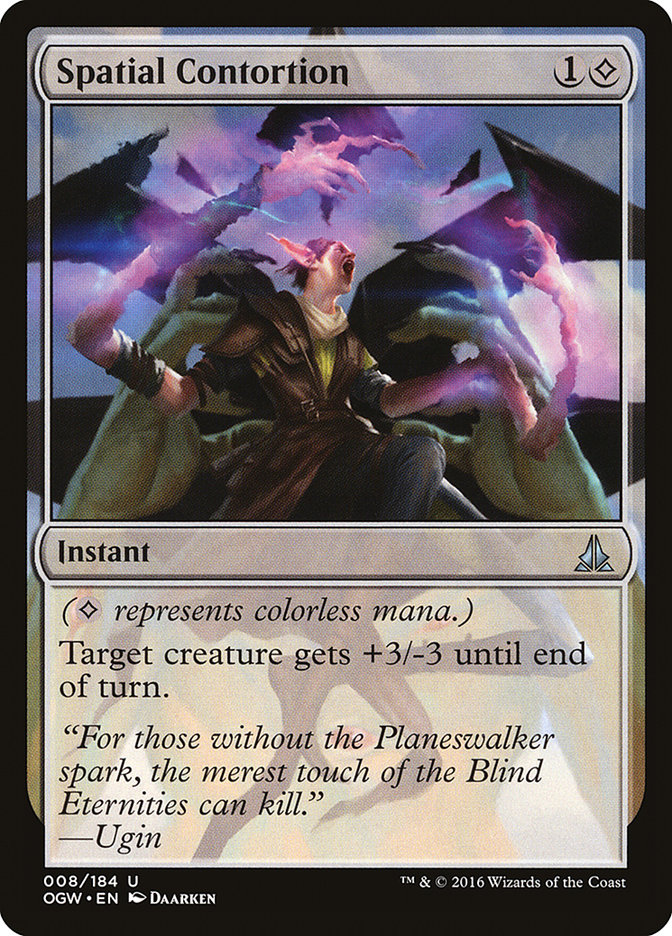Competitive Magic is on vacation. While spoiler season is starting to get in swing, there aren’t too many events to scratch the itch between the holidays and the release of Aether Revolt.
Unless you are one of sixteen specific players.
The #SCGPC is especially unique for someone like me. Not only is it a one-of-a-kind tournament structure that promises high-level Magic, but it also happens to take place in Roanoke, the city I live in. Further, four of my co-workers and friends are participating in it, which grants an interesting perspective. Last year I was far more hands-on with the qualified group’s preparation, helping to slowly tune Jeskai Black.
This year, I’ve taken a bit more of a back seat, largely just being a participating body when Tom Ross has needed an opponent to try out his decks.
As a result, I’ve had less investment and more room to be objective about how I would in theory prepare for the Players’ Championship. While this piece may not be the most practical in the sense that it is not often that we as Magic players are trying to metagame against hyper-specific fields, there are always broad strokes lessons to be learned. At the very least, I hope that this thought exercise is both fun and provoking and serves as a nice preview of what we might expect to see this weekend.
Most weeks, I’m a player. This weekend? I’m a fan.
The Structure of the Tournament
The first element of the process should be understanding the structure. All three major Constructed formats are present – Legacy, Modern, and Standard.
Complete information on the event can be found here, but the gist is that Legacy is first, the least-played format in the tournament, and largely just sets you up for success or a sweat. Only an exemplary or terrible Legacy performance puts you in either extreme – straight into the “battle for byes” or “play to stay” group. Second and third place of the group immediately switch to Modern after three rounds to determine which group they will be placed in through their grudge match.
In other words, despite the fact that a 3-0 Legacy performance can functionally place you directly into the Top 12, Modern will be doing the majority of the heavy lifting for determining whether players make the elimination rounds. It is theoretically possible that a player would not be punished for an “unplayable” Legacy choice until the literal finals of the tournament – where even then they could prevail through their Standard and Modern choices.
All things considered, despite the fact that Legacy sets the tone for a player’s performance, I would consider it the least important format. If I had to allocate my time to practice with my decks, this is the format that I would put the least into.
On the Other Hand
As I’ve hinted at to some degree, I believe Modern to be the most important format. A perfect Modern record can bail a player out from a mediocre Legacy finish and straight into the quarterfinals – a bye in the Standard rounds. Despite the fact that two (or three) single-elimination matches of Standard are incredibly high-stress situations, Modern is going to largely determine a player’s success in the tournament.
In the simplest terms, my hierarchy of preparation would then be Modern, followed by Standard, followed by Legacy.
Small Tournaments and Deck Philosophy
I’ve talked about this subject a few times, but I think it bears repeating here. The smaller a high-level tournament is, the denser the talent. As a result, my skill gap is heavily diminished at a Pro Tour, Invitational, or the PC compared to a large Open or Grand Prix.
I want to be proactive and force my opponents into difficult positions whenever they stumble or their draws don’t line up well. Not only are proactive decks simply better on average, but they care less about the opponent across from you.
If you can’t answer my Gideon, Ally of Zendikar or Blighted Agent, you could just very well be dead. On the other hand, I have no doubt that Todd Anderson and Jim Davis are likely equipped to play around my Void Shatters and Mana Leaks a high percentage of the time.
I would not register a blue control deck in any format (or the majority of blue midrange decks in Legacy).
Doing the Homework
To me, this is the fun part. Due to the structure and size of the tournament, it is possible to make soft-hard reads on what players will register in each format based on their history and preferences. As important as playing the actual games is, sometimes proper metagaming can be what wins the tournament. This was on full display last year when Jim Davis ran through the whole Roanoke Jeskai Black contingent with his R/G Ramp deck.
Here’s where I would place the players:
|
Player |
Legacy |
Modern |
Standard |
|
Jim Davis |
Sultai Delver |
Grixis Delver |
Esper Aggro |
|
Todd Stevens |
Infect |
W/R Prison OR |
Aetherworks |
|
Joe Lossett |
Miracles |
Tron |
Aetherworks |
|
Caleb Scherer |
Storm |
Dredge OR Infect |
B/G Delirium |
|
Max McVety |
Infect |
Infect |
W/B Humans |
|
Jeff Hoogland |
Mono-Red Sneak Attack |
Kiki Chord |
B/G Delirium |
|
Gerry Thompson |
Shardless Sultai OR |
Dredge |
R/B Aggro |
|
Andrew Tenjum |
Grixis Delver |
Dredge OR Jund |
Aetherworks |
|
Liam Lonergan |
Grixis Delver |
Elves |
Aetherworks |
|
Tom Ross |
Lands |
Dredge OR Tron |
W/B Humans |
|
Andrew Jessup |
Elves |
Infect |
R/B Aggro |
|
Kevin Jones |
Blue Control |
Grixis Delver |
Esper Aggro |
|
Jacob Baugh |
Grixis Delver |
Dredge |
Aetherworks |
|
Brad Carpenter |
Colorless Eldrazi |
Infect |
B/G Delirium |
|
Todd Anderson |
B/R Reanimator |
Jund |
Aetherworks |
|
Brad Nelson |
Sultai Delver |
B/G Delirium |
Note: I do have some bias and additional information by consulting with some players. This is the direct reason that this article was put up today, so as to not affect the integrity of the tournament (all decklists have been submitted and cannot be changed).
It is also worth noting that, of course, there is a large margin of error here. This is mostly my opinion taken from what I know of a player’s history, propensity, or playstyle. I’m also far more confident in some picks than others.
For instance, Liam Lonergan’s play history throughout the last year is minimal – basically only including his victory at the Season Two Invitational and his route for qualifying with Elves in Modern. His choice of Bant Company in Standard for that event combined with the lack of information would lead me to believe that his Standard and Legacy choices would be of “the best deck variety” – safe and solid choices like Grixis Delver and Aetherworks Marvel.
Creatures (34)
- 4 Llanowar Elves
- 1 Eternal Witness
- 4 Heritage Druid
- 4 Nettle Sentinel
- 3 Elvish Visionary
- 4 Elvish Archdruid
- 3 Ezuri, Renegade Leader
- 1 Spellskite
- 1 Scavenging Ooze
- 4 Elvish Mystic
- 1 Reclamation Sage
- 4 Dwynen's Elite
Lands (18)
Spells (8)

This analysis can be applied to some of my other picks where I have less reliability, like Andrew Tenjum and Grixis Delver or Joe Lossett and Aetherworks Marvel.
How players might interpret this information is also fascinating to me. If I’m Kevin Jones and known for playing Grixis Delver, does that entice me to move off the deck that I feel most comfortable with? It’s hard to say. If my “deck of choice” was something more mainstream like Infect or Dredge, which can suffer from hate cards, than I might be encouraged to make an audible, but the difficulty with this train of thought in Legacy or Modern is just how critical familiarity with your deck is.
In this example of Kevin (or Jim) specifically, I wouldn’t expect him to move from Grixis Delver due to it being a relatively flexible strategy that can adjust to a perceived metagame. I would be prepared to kill some Delvers in both formats going into this weekend.
For the sake of completing this exercise, let’s assume that the participants are doing their homework on me. What would they pick me to play? To some degree, I would consider this one of my strengths, as I have such a wide range.
Despite my mediocre record with it at the last Invitational, R/G Scapeshift is a safe pick for Modern, although Corey Burkhart’s recent success with it might lead many to believe that I have faith in Grixis Control again (spoiler: I don’t and Corey is just a monster). Standard went well with R/B Aggro, but my publication last week praised Jacob Baugh’s Aetherworks strategy. Legacy is certainly the hardest. I’m somewhat known for Delver and Stoneforge strategies of the distant past, but my last semi-successful tournament was with an Eldrazi and Taxes deck. I wouldn’t be surprised if folks put me on some generic Grixis Delver deck, but we’ll go into more detail with all of this in just a moment.
Legacy
As I spoke about before, when it comes to gaming Legacy, I basically need to decide whether I should invest in trying to 3-0 the format. Unless complete disaster befalls me, I expect to at least 1-2 with any archetype I’m remotely familiar with. From there it comes down to picking an excellent Modern deck and having fortune smile favorably on me to lead into the Standard elimination rounds.
Looking over our chart, the most important type of cards to target are creatures – I need to be able to kill or favorably interact with Glistener Elf and Delver of Secrets. With only two or three perceived combo decks in the field, I feel relatively comfortable with playing a deck that is light or devoid on Force of Will.
Objectively, I think the “best 3-0 deck” is Lands (which is the conclusion I drew with Tom), but I’m not necessarily sure that present Michael has the ability to play the deck. For the sake of this article, I’m assuming that I didn’t draw conclusions that it was the correct deck to play two weeks ago and I’ve been practicing. Like I said, I’m not comfortable with the idea that spending a significant amount of time on Legacy is even fruitful.
I digress. The counterargument to not simply try to play Lands, even though I do think it to be the best deck in this field (and arguably the format), is that it is a deck that I think I am capable of 0-3ing with, which of course is a disaster I want to avoid.
With little combo, a heavy emphasis on creatures, the potential for Eldrazi, and a strong Miracles player in the field, I think Shardless Sultai hits the sweet spot for me.
Creatures (17)
Planeswalkers (3)
Lands (22)
Spells (18)

I doubt I would be a favorite to 3-0, but the potential is there. I feel comfortable being able to scrap out a couple of wins, and I think it would be a fine deck to have in most situations.
Modern
The big one. Our data would suggest that the big targets are Dredge, Infect, and various fair decks with the potential for a few singleton opponents, like Tron, Elves, Bant Eldrazi, and Death’s Shadow Aggro. Theoretically, if we are willing to make real deckbuilding concessions to Infect, Tron and R/G Scapeshift are well positioned against this field.
As someone who has played with Scapeshift over the last few Modern tournaments to average success, I can say that the biggest problem with the deck is the ability for it to draw the appropriate mix of cards at the correct stage of the game. Although the deck is fairly threat-dense, there isn’t much benefit to drawing multiple copies of those threats, as they are typically enough to win the game on their own.
There is a severe problem with not drawing enough ramp or interaction to have the raw speed necessary to compete with the rest of the format. When the deck operates smoothly, it feels like a dream, combining a turn 4 or 5 kill with some redundancy and a piece of disruption, but that is asking a lot.
Tron variants on the other hand combine similarly game-winning threats alongside a ton of cantrips and the best velocity card in the format, Ancient Stirrings.
The latter is so incredibly powerful for smoothing out your draw or finding a way to close the game that I think the deck is head and shoulders above Scapeshift. What makes Stirrings even better is when you build your deck well, incorporating colorless interaction that can be found quickly and effectively.
Here is the Tron build that I would register as of this writing:
Creatures (6)
Planeswalkers (7)
Lands (19)
Spells (28)
- 3 Oblivion Stone
- 4 Sylvan Scrying
- 4 Chromatic Sphere
- 4 Chromatic Star
- 3 Relic of Progenitus
- 4 Expedition Map
- 4 Ancient Stirrings
- 2 Spatial Contortion
Sideboard

The big takeaways that the two aforementioned have concluded are that Tron basically just needs time – it still has the better end-game in the vast majority of matchups through Ulamog, the Ceaseless Hunger – and that Ugin, the Spirit Dragon and Oblivion Stone are the most powerful cards in the deck. The former especially ends the game on the spot in many contests by both stabilizing the battlefield and presenting an insurmountable threat. You don’t need a ton of threats, just the most hard-hitting ones.
Deck construction that hinges upon Hangarback Walker and Spatial Contortion is the big nod towards those realizations. Colorless interaction and roadblocks are the key to making it towards turn 5 and beyond.
I suspect that not only is Tron a great choice for this tournament, but the deck to beat in Modern.
Standard
Oddly, I believe Standard to be the format with the least potential for innovation. While I put up a 7-1 result at the Season Three Invitational with R/B Aggro, I’m not exactly sure I’d be comfortable playing the deck again now that Aetherworks Marvel has proven itself to be, in my mind, the clear best deck. While aggression backed by disruption is a valid strategy, fighting through Woodweaver’s Puzzleknot; Ishkanah, Grafwidow; and planeswalkers is difficult enough, even without Emrakul, the Promised End in the equation.
This, coupled with the fact that B/G Delirium should make its presence known (which is an acceptable but not great matchup for R/B Aggro), means that I would be all-in on building the best Marvel deck for the mirror I could.
Here is how I might go about doing that:
Creatures (11)
- 2 Ulamog, the Ceaseless Hunger
- 1 Sigarda, Heron's Grace
- 2 Emrakul, the Promised End
- 2 Ishkanah, Grafwidow
- 4 Servant of the Conduit
Planeswalkers (6)
Lands (21)
Spells (22)

Esper Aggro and W/B Humans are some potentially scary decks with this configuration, but I think the sacrifice is worth it. I firmly believe that with a stellar Modern performance, the only thing standing between a player and the finals of the Players’ Championship will be trial by Aetherworks. Potentially two rounds of Standard (including the grudge match) stand between a player and the reaching the quarterfinals, which is enough room to weed out the majority of non-Aetherworks participants.
Yes, I do firmly believe that Naya Aetherworks is that good.
I’ve both shaved some of the weaker cards in the mirror, like Ishkanah and Harnessed Lightning, while incorporating a bigger “high roll” with Ulamog, the Ceaseless Hunger, similar to many of the Temur Aetherworks decks that have been popping up recently.
I’ve also tried to increase the consistency of deck by including a Spawning Bed to facilitate hardcasting Ulamog alongside an additional Traverse the Ulvenwald. Not stumbling is of utmost importance.
While the sideboard does have a few hedges towards playing against aggressive white strategies, the plan in the mirror is largely to hope your opponent doesn’t crush you with their best draw and incorporate a bigger ramp strategy.
Deathcap Cultivator gives the deck more redundancy on hitting four mana on turn 3, and Chandra, Torch of Defiance into World Breaker is a smooth and powerful curve for never letting go. This sideboard plan also works well against B/G Delirium and effectively sidesteps many of their more popular hate cards.
Time to Tune In
I’m excited to compare my take on the tournament with those of the participants. Tomorrow marks the beginning of the Players’ Championship. Be sure to watch all the action, viewable on Twitch, starting at 10 AM Eastern time to see who is crowned our champion!


